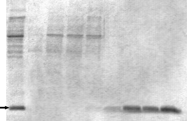Crossref Citations
This article has been cited by the following publications. This list is generated based on data provided by
Crossref.
Liu, Jia-Wei
Yang, Ting
Ma, Lin-Yu
Chen, Xu-Wei
and
Wang, Jian-Hua
2013.
Nickel nanoparticle decorated graphene for highly selective isolation of polyhistidine-tagged proteins.
Nanotechnology,
Vol. 24,
Issue. 50,
p.
505704.
Sun, Huan
Yu, Qiong-Wei
He, Hai-Bo
Lu, Qian
Shi, Zhi-Guo
and
Feng, Yu-Qi
2016.
Nickel Oxide Nanoparticle-Deposited Silica Composite Solid-Phase Extraction for Benzimidazole Residue Analysis in Milk and Eggs by Liquid Chromatography–Mass Spectrometry.
Journal of Agricultural and Food Chemistry,
Vol. 64,
Issue. 1,
p.
356.
Yu, Qiong-Wei
Sun, Huan
Wang, Kuan
He, Hai-Bo
and
Feng, Yu-Qi
2017.
Monitoring of Carbendazim and Thiabendazole in Fruits and Vegetables by SiO2@NiO-Based Solid-Phase Extraction Coupled to High-Performance Liquid Chromatography-Fluorescence Detector.
Food Analytical Methods,
Vol. 10,
Issue. 8,
p.
2892.
González-García, Estefanía
Marina, María Luisa
and
García, María Concepción
2020.
Nanomaterials in Protein Sample Preparation.
Separation & Purification Reviews,
Vol. 49,
Issue. 3,
p.
229.
ZHELTONOZHSKAYA, Т.B.
PERMYAKOVA, N.М.
FOMENKO, A.S.
KUNITSKAYA, L.R.
KLEPKO, V.V.
GRISHCHENKO, L.М.
and
KLYMCHUK, D.О.
2021.
FORMATION OF NICKEL NANOPARTICLES IN SOLUTIONS OF A HYDROPHILIC GRAFT COPOLYMER.
Polymer journal,
Vol. 43,
Issue. 2,
p.
79.
Zheltonozhskaya, T. B.
Permyakova, N. M.
Fomenko, A. S.
Klymchuk, D. O.
Klepko, V. V.
Grishchenko, L. N.
and
Vretik, L. O.
2021.
The process of nickel nanoparticle formation in hydrophilic polymer/inorganic matrices.
Molecular Crystals and Liquid Crystals,
Vol. 716,
Issue. 1,
p.
13.
Eivazzadeh-Keihan, Reza
Bahreinizad, Hossein
Amiri, Zeinab
Aliabadi, Hooman Aghamirza Moghim
Salimi-Bani, Milad
Nakisa, Athar
Davoodi, Farahnaz
Tahmasebi, Behnam
Ahmadpour, Farnoush
Radinekiyan, Fateme
Maleki, Ali
Hamblin, Michael R.
Mahdavi, Mohammad
and
Madanchi, Hamid
2021.
Functionalized magnetic nanoparticles for the separation and purification of proteins and peptides.
TrAC Trends in Analytical Chemistry,
Vol. 141,
Issue. ,
p.
116291.
Minh, N. N.
Quyen, H. T. N.
and
Xuan, T. T.
2022.
Fabrication of nickel magnetic nanoparticles by combination of polyol and hydrothermal processes.
Digest Journal of Nanomaterials and Biostructures,
Vol. 17,
Issue. 2,
p.
597.
ZHELTONOZHSKA, Т.B.
PERMYAKOVA, N.М.
KLEPKO, V.V.
GRISHCHENKO, L.M.
and
KLYMCHUK, D.О.
2023.
Highly dispersed nanocomposites based on polymer/inorganic hybrids and nickel nanoparticles: the role of the matrix structure in the process of in situ formation.
Polymer journal,
Vol. 45,
Issue. 1,
p.
37.
Soto, Ernesto R.
Specht, Charles A.
Lee, Chrono K.
Levitz, Stuart M.
and
Ostroff, Gary R.
2023.
One Step Purification—Vaccine Delivery System.
Pharmaceutics,
Vol. 15,
Issue. 5,
p.
1390.
Le, Thanh-Do
Suttikhana, Itthanan
and
Ashaolu, Tolulope Joshua
2023.
State of the art on the separation and purification of proteins by magnetic nanoparticles.
Journal of Nanobiotechnology,
Vol. 21,
Issue. 1,
Karimi, Fatemeh
Zare, Najmeh
Bekmezci, Muhammed
Akin, Merve
Bayat, Ramazan
Seyitoglu, Bilal
Arikan, Kubilay
Isik, Iskender
and
Sen, Fatih
2024.
Enzyme-free glucose detection via scalable and economical fabrication of nickel-polyvinylpyrrolidone-modified multi-walled carbon nanotubes.
Electrochimica Acta,
Vol. 496,
Issue. ,
p.
144341.





